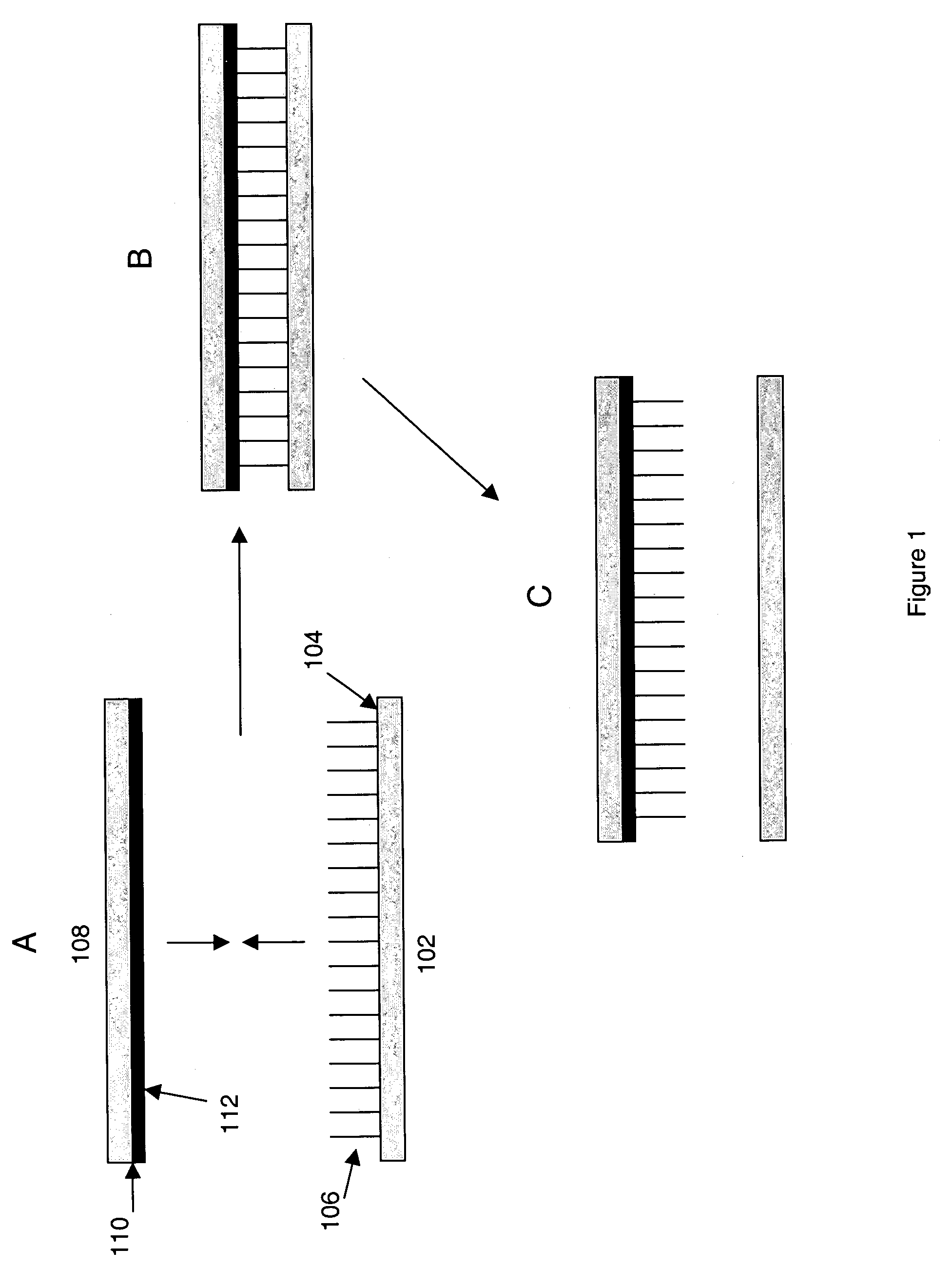Methods, devices and compositions for depositing and orienting nanostructures
a nanostructure and nano-structure technology, applied in the direction of nanoinformatics, polycrystalline material growth, crystal growth process, etc., can solve the problems of virtually all nanomaterials, affecting virtually all nanomaterials, and integrating these materials into devices and/or systems
- Summary
- Abstract
- Description
- Claims
- Application Information
AI Technical Summary
Benefits of technology
Problems solved by technology
Method used
Image
Examples
examples
[0057]The methods described herein were employed in depositing nanowires onto a substrate in a substantially aligned orientation. In particular, a 4″ silicon wafer was used as the receiving substrate and patterned with a solution of a pressure sensitive adhesive (PolySciences 534028 in 30% isopropanol) with spots of adhesive that measured approximately 50 μm in diameter. Spotting was carried out using a standard XYZ robot and pipettor. Once deposited, the spots were dried at 60° C. to form adhesive pads about 10 μm thick on the surface of the wafer.
[0058]The transfer substrate was prepared on another 4″ silicon wafer using the standard gold colloid based CVD growth process as generally described by Lieber et al. (See, e.g., US 2003-0089899-A1). The resultant transfer wafer possessed a covering of nanowires that each generally measured approximately 40 nm in diameter and 40 μm in length (as approximated from SEM inspection).
[0059]The wire surface of the transfer wafer was set down up...
PUM
| Property | Measurement | Unit |
|---|---|---|
| aspect ratio | aaaaa | aaaaa |
| diameter | aaaaa | aaaaa |
| thick | aaaaa | aaaaa |
Abstract
Description
Claims
Application Information
 Login to View More
Login to View More - R&D
- Intellectual Property
- Life Sciences
- Materials
- Tech Scout
- Unparalleled Data Quality
- Higher Quality Content
- 60% Fewer Hallucinations
Browse by: Latest US Patents, China's latest patents, Technical Efficacy Thesaurus, Application Domain, Technology Topic, Popular Technical Reports.
© 2025 PatSnap. All rights reserved.Legal|Privacy policy|Modern Slavery Act Transparency Statement|Sitemap|About US| Contact US: help@patsnap.com



